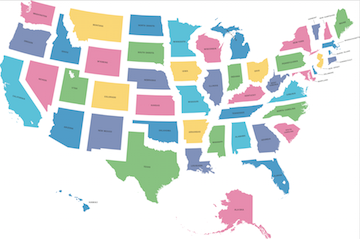Continuing care retirement communities in the Northeast and Mid-Atlantic regions of the United States had the highest overall occupancy in the third quarter of 2018, according to National Investment Center for Seniors Housing & Care Senior Principal Lana Peck.
But success varied by region when it came to the types of care segments within CCRCs (also known as life plan communities), Peck wrote in a recent blog post.
Peck detailed the findings of an analysis of the the 99 primary and secondary metropolitan markets measured by NIC MAP; it included units in lease-up as well as occupied units.
For independent living, occupancy was highest in the Mid-Atlantic region, at 94.8%, and lowest in the Southwest region, at 88.6%.
For assisted living, communities in the Northeast region had the highest occupancy, 93.4%, and those in the Mountain region had the lowest, 85.2%.
In memory care, CCRC occupancy was highest in the East North Central region, at 92.4%, and lowest in the Mountain region, at 77.9%.
Skilled nursing occupancy within CCRCs was highest in the Northeast, at 92.4%, and lowest in the Mountain region, 80.5%.
See NIC’s website for a list of the cities included in each region.
Overall and by care segment, third-quarter CCRC occupancy was higher compared with non-CCRC occupancy in the 99 primary and secondary metropolitan markets measured by NIC MAP, Peck said. The greatest differences were seen in memory care, where there was a difference of 6.7 percentage points, and assisted living, 5.4 percentage points.
See the blog post for additional information.


